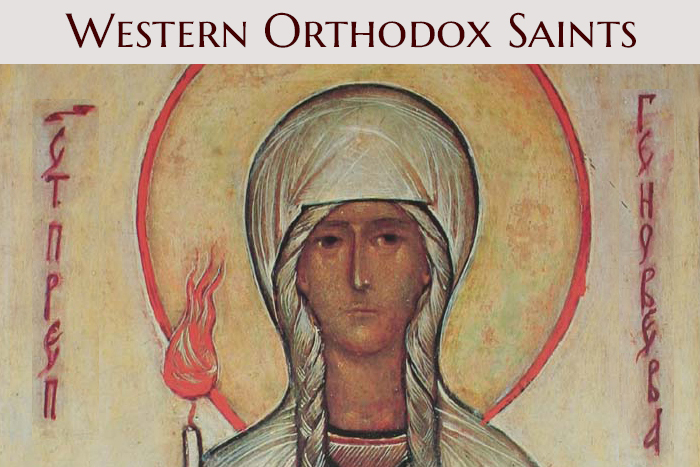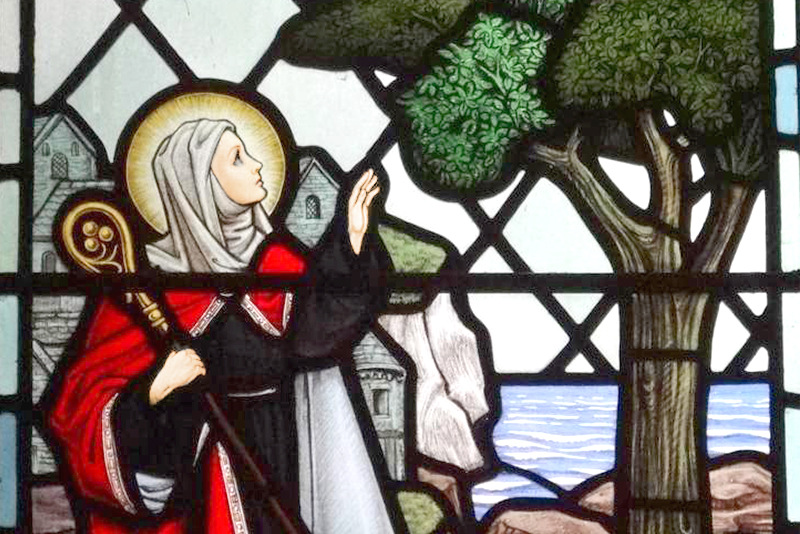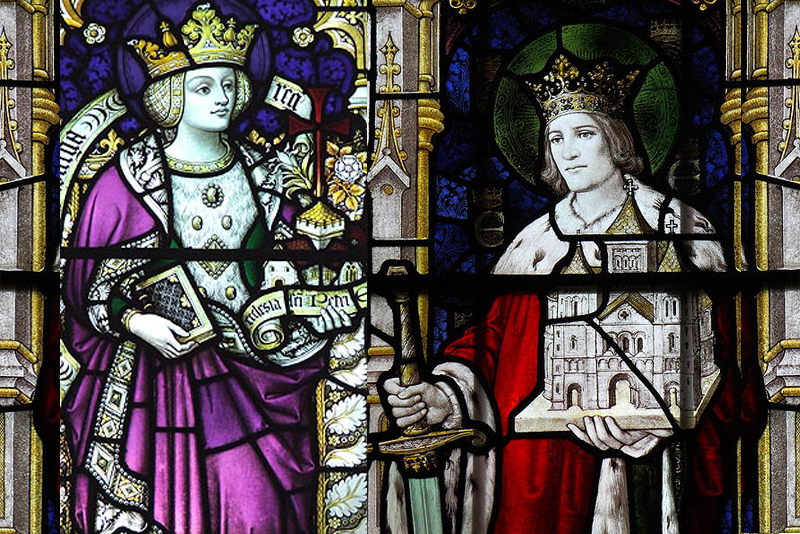
The Orthodox must have heard of the famous Syrian ascetic Symeon the Stylite. Numerous people came to him for advice, including Emperor Marcian (396-457) in disguise. St. Symeon, the great monk, asked Christians from the West, who had heard of the great ascetic and came to him, to send his regards to Genevieve, a girl from Paris, and to ask for her prayers. He had heard of that holy girl from Oriental merchants. Who was that Christian girl from the Western lands, from whom the famous Eastern ascetic asked for intercession before God? For the sake of brevity, let us mention only the basic facts of her life.
1. The future saint was born in 423 in the town of Nanterre, not far from Lutetia (the former name of Paris). Her parents Severus and Herontia were Christians and owned a small plot of land on which the future patroness of France grazed sheep. When the girl was only 12 years old, St. Germanus of Auxerre and St. Lupus of Troyes stopped in Nanterre on their missionary trip to England. People went out to the saints for blessing and St. Germanus, revered throughout Gaul, singled out the little girl, kissing her on the forehead and predicting to her parents about the glorious future of their daughter. The girl replied to the bishop that she was eager to dedicate her life to Christ. The saint handed her a coin with a monogram of Christ and told her not to wear any other jewelry, so that her soul would be captivated only by heavenly treasures.
2. After these events, Genevieve began to attend church services even more frequently, which led to a regrettable conflict with her mother, who demanded more help from her daughter in her household. One day, on her way to church, Herontia forbade her daughter to go with her. Genevieve refused to obey and was still following her, weeping and saying that she had to go to the church to be worthy of becoming a bride of Christ. The mother was angry at her daughter’s words, hit her on the cheek and immediately went blind. Herontia was blind for twenty-one months. Having recalled St. Germanus’s words and realizing that it was pointless to oppose God’s will, Herontia asked her daughter to forgive her. Genevieve spent a long time praying fervently for her mother at the well and her tears were dripping into the water. She brought the water home, made a sign of the cross, and gave it to her mother to wash her face. The woman asked God with lifted arms to forgive her, then washed herself with the water three times, after which she saw the light. From then on, she never stopped her daughter from pursuing her calling.
3. Coenobitic female monasticism appeared in the West later than in the East, but there had been an institution of maidens in the West since ancient times. Young Christian girls first made a simple promise to dedicate themselves to God, and then went through a more or less lengthy period of testing their faith and piety, while the clergy and the community of believers observed the firmness of the Christian girl’s intentions. After this trial, the young maidens vowed celibacy, and the bishop performed the rite of their dedication and put a purple or red headband (flammeum) on their heads. The maidens lived with their relatives and were able to communicate with other lay people, dispose of their property and time for prayer in the spirit of godliness. Genevieve made her vow to God at the age of 14, together with three other maidens, and St. Marcellus of Paris, who took their vows, distinguished her by dedicating her first.
4. The Roman Empire faced a lingering internal crisis, compounded by a constant external threat from barbarians. Hordes of the Huns, who came from distant Asia, now invaded Gaul and were a deadly threat. The small town of Lutetia, where St. Genevieve lived, stood in their way. The population was in panic, and many sought refuge in the surrounding towns and villages, but St. Genevieve called upon everyone to pray and repent, confident that the Lord would lead the trouble away from their hometown. The frenzied townspeople almost killed the maiden, but soon came to their senses and started praying for deliverance in all churches. Attila abruptly turned his troops and bypassed Paris. When he reached Rome, he was stopped by the exhortations of the Holy Pope Leo, as well as by a menacing vision.
It is beyond our ability to recount all the miracles performed thanks to St. Genevieve’s prayers, and to list all the good deeds she did. At her request, a basilica was built in honor of St. Dionysius, the first bishop of Paris, and many of the townspeople were saved from starvation thanks to her initiative to send ships to remote corners of the province to pick up bread. God healed a blind girl through the saint’s prayer and granted many other healings. It was largely thanks to Genevieve that King Clovis, who conquered Gaul, received the Orthodox Baptism, which marked the beginning of the Christianization of the Franks.
The saint reposed peacefully on January 3, 512, at the age of 88. Thanks to the growing veneration of the saint among the Orthodox Christians of France, the Synod of the Russian Church decided to include the name of Genevieve in the Russian menologion for all-Church veneration.
You can order an icon of any saint in our icon-painting studio



